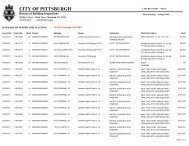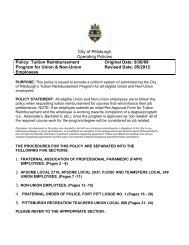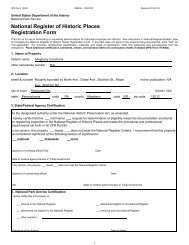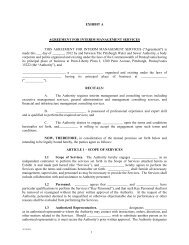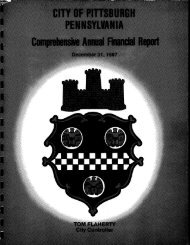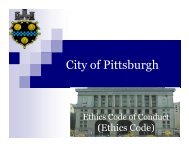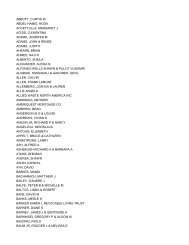east liberty station: realizing the potential - City of Pittsburgh
east liberty station: realizing the potential - City of Pittsburgh
east liberty station: realizing the potential - City of Pittsburgh
You also want an ePaper? Increase the reach of your titles
YUMPU automatically turns print PDFs into web optimized ePapers that Google loves.
4. Maximize <strong>station</strong> connectivity<br />
and visibility.<br />
The <strong>station</strong> should be a key node in <strong>the</strong><br />
public realm and pedestrian network, with<br />
maximum accessibility and visibility from<br />
<strong>the</strong> major street network and surrounding<br />
neighborhood. Station entries should<br />
connect to active pedestrian spaces<br />
which encourage ga<strong>the</strong>ring. Pedestrian<br />
connections to feeder transit routes should<br />
be visible and well-integrated into <strong>the</strong><br />
public space network.<br />
6. Manage parking effectively.<br />
Parking supply and location should reinforce<br />
TOD goals while balancing market<br />
demands. Parking should be shared to <strong>the</strong><br />
degree possible, and park-and-ride provision<br />
should be appropriate to <strong>the</strong> <strong>station</strong><br />
typology, generally decreasing as land use<br />
intensity increases. A parking strategy<br />
should also include bicycle parking, car<br />
pooling priority, and ideally bicycle and car<br />
sharing services.<br />
7. Capture <strong>the</strong> value <strong>of</strong> transit<br />
TOD should capitalize on <strong>the</strong> value <strong>of</strong> transit.<br />
Value capture strategies can include<br />
fiscal policies, including property and sales<br />
taxes, real-estate lease and sales revenues,<br />
farebox revenues, and fees on everything<br />
from parking to business licenses. Value<br />
capture strategies can also include nonfiscal<br />
strategies, including inclusionary<br />
zoning, where <strong>the</strong> value <strong>of</strong> transit access<br />
can induce a market-rate development to<br />
include affordable units, or “in kind” public<br />
improvements such as parks or plazas that<br />
are conditions <strong>of</strong> development. In <strong>the</strong> case<br />
<strong>of</strong> a Transit Reinvestment District, value<br />
capture can be a means to fund necessary<br />
infrastructure improvements, encourage<br />
higher quality development, and ensure<br />
community benefits such as affordable<br />
housing, small business opportunities and<br />
job creation.<br />
17<br />
5. Design streets for all users.<br />
Streets should be designed to safely accommodate<br />
all users including, pedestrians,<br />
bicycles, cars and buses. In close proximity<br />
to transit, priority should be given to accommodating<br />
non-automotive modes when<br />
conflicts arise.



